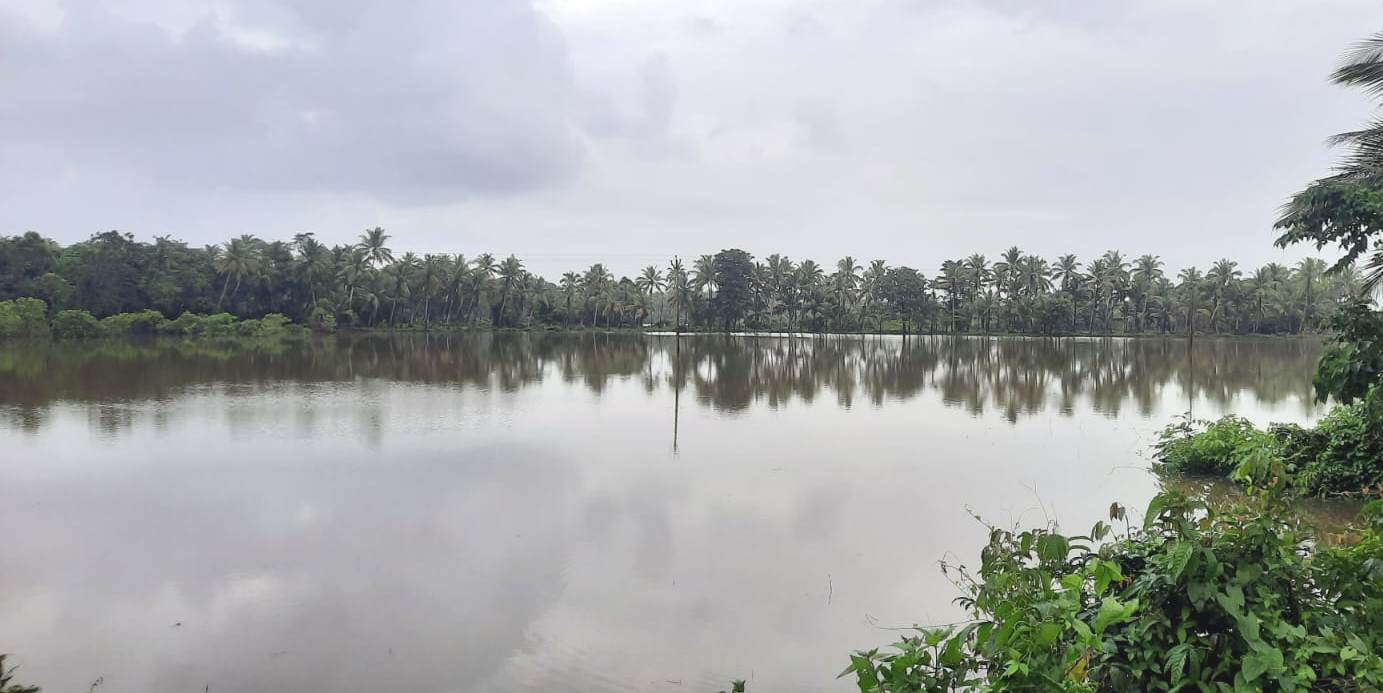Villagers blame bypass construction works, say rain water flowing from Nuvem not draining out; Farmers fear waterlogging may destroy transplanted paddy

MARGAO
Seraulim farmers and villagers appeared a worried lot with the heavy downpour over the last few days, but for a different reason.
They have found out to their shock and surprise that rain water flowing from Nuvem into the village has not drained out further downstream towards Benaulim. Instead, the rain water has accumulated in the low-lying areas of the village, including the Duncolim Vodlem tollem and Duncolim Daktem tollem and the low-lying agricultural fields behind the Church.
They are of the strong opinion that the ongoing works in respect of the construction of the western bypass on stilts has created a dam-like situation near the wholesale fish market junction as a result of which rain water coming from Nuvem is not flowing freely downstream towards Benaulim.
In fact, a flood like situation prevails in the low-lying areas of Seraulim, with farmers fearing that waterlogging may destroy their paddy transplanted only a few days ago.
Ex-Seraulim panch member Kevin D’Sousa attributed the inundation of the low-lying fields and lakes in the village to the dam like situation near the ongoing bypass works. “Instead of the water flowing downstream towards Mungul and Benaulim, the rain water has flowed back into the Duncolim voddlem and daktem tollem and the low-lying areas behind the Church,” he said.
He added: “If the situation persists for a couple of days, it is feared by the local farmers that the transplanted paddy will rot causing losses.”
D’Souza said the authorities, including the PWD, National Highway and the disaster Management Authority should immediately inspect the low-lying areas of Seraulim and open all the waterways blocked by the ongoing bypass construction work.
“Because of the damning of the water flow in Seraulim at and around the bypass construction site, rain water flow towards Benaulim has been affected. Last year, we had witnessed a situation wherein there was back flow of water, inundating the low-lying fields. This time, the rain water seems to be not flowing freely downstream,” he pointed out.
A visit to Mungul on Saturday noon revealed that the low-lying areas along the bypass on stilt alignment between the Margao-Colva road was inundated by water. These wetlands have been the water catchment areas in Mungul and surrounding areas during the monsoons. Locals, however, have been trying to find why the rain water was not flowing freely towards Benaulim.
For, the Tolleaband water body in Benaulim, which is the focus of attention, with the villagers demanding construction of the bypass on stilts is still not full to the brim. Locals, however, say that the worst is not over yet and a heavy downpour coupled with a high tide, when the sea water entering the river Sal, will aggravate the situation.
At the height of the monsoons last year, the Tolleaband water body was submerged under water, creating a flood like situation, inundating low-lying areas of Benaulim, besides the low-lying areas of Comba in Margao.
The Water Resources Department had later recommended construction of the bypass passing through the Tolleaband water body on stilts, a report which did not find favour with the Goa government and the Union Ministry of Surface Transport.